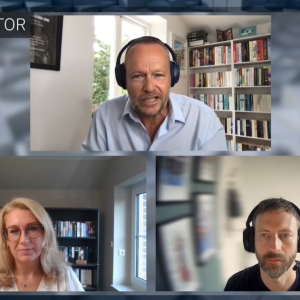The trouble with common sense is that it does not lend itself to flamboyant showmanship and is therefore quite a difficult commodity to market. While the Oracles and Information Builders of the world were showing off relational databases and fourth generation languages, the equivalent in footwear of platform shoes and winklepickers, Software AG has always been a sensible shoe sort of a company. Throughout the 20 years of its life it has, quaintly, sold product to raise the money to invest rather than borrowing cash to build up the company. It is currently the sixth largest independent software company with a turnover of $379m, says it has never made a loss, and adds that it has not got where it is today via marketing hype or by acquiring companies. So precisely where is the German company today?
Clapped-out products
Well considering that it set up its first marketing post in 1987, it is not doing too badly. Of course if it had bothered to market itself and its products from the beginning it might be doing a lot better. This is a subject dear to the heart of Charles Hogan, marketing manager of Software AG in the UK. He is currently attempting to popularise the idea that the firm has brands – that the Adabas database and the Natural development environment are brand names. You see, the company is constantly battling against a market perception that Adabas and Natural are old, clapped-out products, whereas as Hogan points out the difference between the first version and the current version is immense – he drew the analogy with a Rolls Royce. Aside from not making the most of its brand names, Software AG has been spectacularly unsuccessful at making buzz words work for it. For example, Software AG has declined to describe Adabas as a relational database, and in theory it was right so to do because Adabas is not strictly speaking relational, but this has enabled a belief to develop that Adabas is sort of hierarchical – read outdated, or is a network database – read niche product and tiny market share – both misconceptions that have had a helping hand from friendly rival vendors. In fact Adabas, which just came come top in a Computerworld poll of mainframe database users, is since launch of the Entire layer in 1989, probably best described as an entity-relationship database. That is, it uses Peter Chen’s model of data, and it could describe itself as a horrendously fashionable object database – it can express both nouns and verbs directly without needing foreign keys as the relational databases do. While the Entire database is available as a product, it was really designed as an internal tool and its functionality has been embedded in the Predict Predict is Software AG’s data dictionary – software engineering tools and in the Natural Expert tool. This means that Software AG has quietly leapt a generation ahead of the relational database vendors, which is all the more remarkable when you consider that its user base is True Blue and conventional Adabas sits alongside IBM’s DB2 in many sites and is streets ahead of it in terms of distributed functionality.
By Katy Ring
But this is just database talk and client-server computing encompasses much more than passing data around. Software AG agrees, for it has recently announced, with a noise as deafening as a pin dropping on the carpet, its Entire Function Server Technology, which has several components. Much simplified the Software AG theory of client-server computing runs thus: there are three components to be considered – databases, applications and user interfaces. Whereas Sybase and Oracle see the problem in terms of getting applications to communicate with databases, and the X Window approach is to manage everything through the user interface, it is the application that is central to Software AG’s model because client-server computing is about splitting the application and moving application processes about. In essence it is about functions asking for a service and the service responding, and this is the point where object-oriented technology enters the picture, or rat
her will next year after the communications aspect of the equation has been rolled out. While the Natural development environment has been designed to be independent of system software code – the core software developed in Natural is inert and is only activated when the appropriate active interface is slotted in for, say,the MVS environment, now with the Entire Function Server, the Natural environment is open to other vendors’ software. For example, with the Entire Function Server all the databases can be held together for an IBM customer, so that a dictionary sitting on the various databases will offer the appropriate entrance to a DB2 system or a VSAM or DL/1 environment to enable data to be accessed. Most remarkably the Entire Function Server offers users the ability to access application services held in existing programs written in any language. And with the Natural technology enabling applications to be cut up, applications designed to run centrally can be distributed and executed without the need to rewrite from scratch. The Open Communications Network offers a program-to-program communication interface spanning SNA, TCP/IP, DECnet and Open Systems Interconnection so that users can navigate the networks. The next release of Net-Work will include the NetWise Remote Procedure Call tool to ensure that users are complying with the demands of the operating environment that they are entering. Finally, the Entire Function Server Protocol, which will be published, will be added as a front-end to program functions, so that they can be activated by a client-request. To begin with, the Protocol will support database access via SQL and extended SQL, electronic mail based on SNADS or X400, Electronic Data Interchange based on EDIFACT or X12, and document interchange via the various proprietary standards. As far as applications go, Software AG can provide a front end protocol for any high level or free-form language vendor that wants to move into the Software AG user base.
Workstation products
As the Natural development environment moves down market to Unix and OS/2 – a development that has taken the company a very long time – Software AG’s whole approach to sales and support will have to change and while it will continue to serve the large information technology user itself, software houses will be enlisted for workstation products. Adabas, Natural and Net-Work will soon appear in the Hewlett-Packard Co HP-UX environment, and will then be offered on other Unix boxes. Gradually other products will be redesigned to run in the HP-UX environment and will then be taken to other systems. Provided that Software AG can kick up a marketing storm without removing its sensible shoes, the Entire strategy should give many rival software vendors pause for thought.






